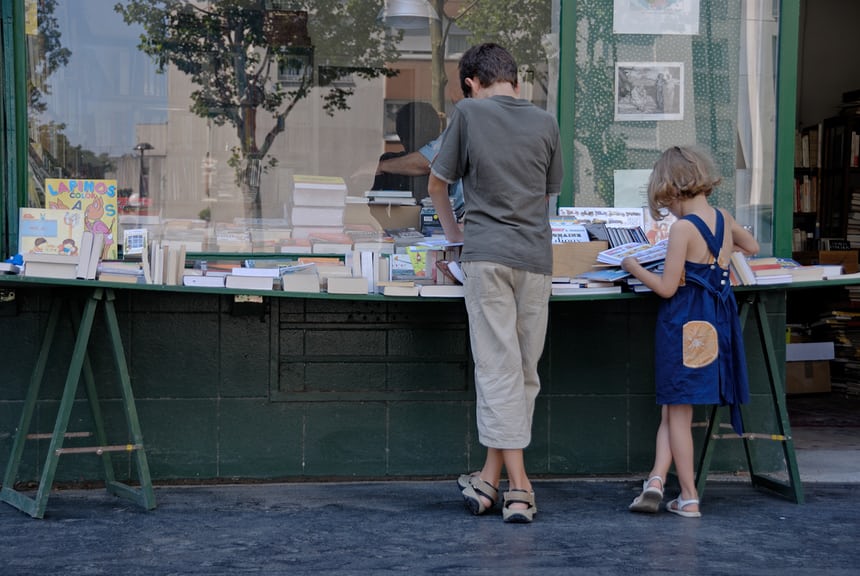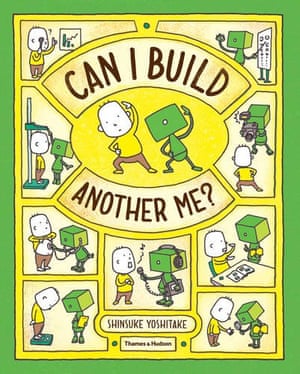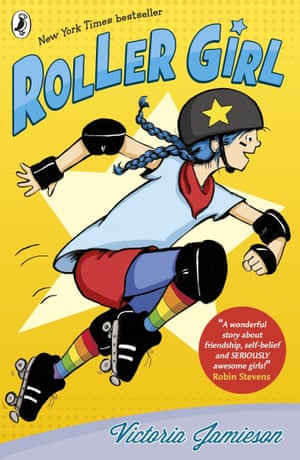From bedtime stories to bribes: how to get your child reading more
Summer is the perfect time to get children reading, but what if they refuse? Authors and experts reveal tips and tricks for every age group
And if you need some inspiration, take a look at these modern classics
Each year when we went on holiday, my parents would treat us to a Summer Special comic. The Beano for my older brother, Blue Jeans for me. I can still feel the paper stiff with salt, the pages carrying the sweet coconut tang of Hawaiian Tropic. I didn’t care if the stories were seldom truly special, because something else was. Reading and pleasure went together in a way that they didn’t at any other time of our lives.
Summer is the perfect time to encourage children to read. Books draw us into other worlds. A child who reads on holiday enters one new world inside another. But you don’t need to travel to make reading feel adventurous. Reading will build a new world anywhere. You can make this idea three-dimensional for younger children by creating a reading den.
My children are seven and 10 and have yet to outgrow our shared story time. We always have a chapter book on the go, even if some weeks it goes more slowly than others. To keep things interesting, we change our reading spots. We have cowered from Cruella de Vil under blankets on the floor, and zipped ourselves inside a tent to read Frances Hodgson Burnett’s The Secret Garden. Switching the time of a shared story is another good way to make it transporting. Stories that are too scary for bedtime (The Machine Gunners by Robert Westall, Coraline by Neil Gaiman, for us) can seem brilliantly subversive in the daytime.
A good way to start a long summer of reading is to take children to the library and sign them up for the Summer Reading Challenge. The children’s author and poet Joseph Coelho took part in a precursor to this initiative when he was 10, and still recalls the thrill of nudging his little spaceship counter along the Velcro backing, one notch for each book read. “It turned reading into a sport,” he says. And that turned him into a reader.
The challenges of leading children to books alter as they age. But whether they are four or 14, the first rule of encouraging them to read is to read yourself. “When a parent says, ‘I can’t get my child to read’, the first thing we ask is, ‘Do they ever see you read?’,” says Sue Wilkinson, chief executive of the Reading Agency charity. It’s a good question. I tend to read at bedtime; I’m pretty sure my children know I like books, but I’m less sure whether they actually witness me in the act. “They’ve got to see you hanging around the house with a book or a newspaper,” says novelist Claire Fuller. Writer Lara Feigel has a six-year-old son whose school advises that boys benefit from seeing male role models read. “And not on their phone,” Feigel adds. Even before her son knew his alphabet, she would give him a book and they would sit side by side on the sofa; he would turn the pages “and pretend to read, next to me reading”. Reading thrives on intimacy.
The second rule is to give a child freedom of choice. Stop trying to leave the book you wish them to read in strategic places. For novelist Ross Raisin, this approach is akin to “holding a book in front of a child as if it’s broccoli and telling them how good it will be for them”. He makes this mistake with his own daughter sometimes, “and she never reads those books”.
And yet, how many of us have hovered in the bookshop or library while a child’s hands swoop to yet another book by the same author? “We’ve all been guilty of saying, ‘Pick something else!’” says Liz Pichon, author of the Tom Gates series. I have said those very words to my son when he has picked up yet another Tom Gates. But as Pichon says: “The way to suck the joy out of reading is to make them read something.” So let them choose. It’s the reading that counts.

The way to suck the joy out of reading is to make them read something. Let them choose … Photograph: Sami Sarkis/Getty
Age 5+
Build the bedtime story into a routine. Take it in turns to choose books: this gives a child free will, and you a chance to share your own favourites. Dramatise your reading: change the pace, the tone, the volume. Share out characters so everyone has a voice. Even readers as young as five can enjoy independence. “Let the child read on their own if they can’t get to sleep, allowing them to establish an independent, slightly rebellious intimacy with it,” novelist Diana Evans advises.

For readers at the lower end of this age bracket, reading can be tiring. Feigel bargains with her son: they read alternate pages. For Raisin: “Oral storytelling is important too, and can excite an interest in stories that lends itself to more reading. In both my school groups and my own children’s beds, I try to encourage telling stories, making them up. That can be a bit of a challenge for the parent at the end of a day … but if you involve your child, letting them take over at points, or adding ingredients, it doesn’t really matter if it’s a load of nonsense. Play is better than prescription – something the school system often ignores – so have fun with reading and let the child lead.”
But some children still show fear around books. Coelho, who has spent years visiting schools with the Reading Agency, suggests a game can help. “Simple things, like finding the name of an illustrator, a certain coloured spine, or a book with more than 100 pages.” Use your bookshelves at home, or go to the library. This type of challenge helps “to make books themselves objects for fun”, Coelho says.
After a reading session, I sometimes quiz my children: what was unusual about the baker’s feet? How did Emil keep his money safe? What plant grew around the door to the secret garden? Or halt the reading at a really exciting place in the narrative and invite each listener to guess what’s going to happen next.
If you are going away on holiday Amanda Craig suggests matching reading to location: “For Cornwall, say, try Nicola Davies’ A First Book of the Sea [aged 4+] or Lauren St John’s new Laura Marlin detective series [9+].”
For children who love screens, show them the Reading Agency’s book sorter, which holds 825,000 recommendations from children. “Programme” the sorter, click the button and see what titles it serves up… Then go and find them in the library or online.
Age 10+
Children at the lower end of this bracket can still enjoy a bedtime story. “It’s a bit like breastfeeding. It can go on much longer than people think,” Craig says. Let the reading evolve to accommodate a child’s changing life. Craig read to her son, who read less independently than her daughter, until he was 12. She searched for things they both enjoyed – “a lot of which was fantasy. The whole of The Lord of the Rings.”

My children and I read together only a few times a week now. We snuggle up or lean on each other instead of sitting on laps. We take it in turn to read in different bedrooms. Sometimes I’ll read a few pages and they will read on alone, then we all catch up the next night. The bedtime story is morphing into a mini book club. Building a conversation around books means that reading plays a part in our lives even when we don’t have a book to hand. And occasionally my daughter, who is 10, reads to me. It’s lovely to listen; you get to hear how the words sound to your child, which will not be how they sound to you.
If a child doesn’t want to read at all, don’t try to foist books on them. “Sometimes it’s about meeting them at their level, and bit by bit widening their horizon,” Coelho says. The best way to reach a football-mad child may be to introduce him or her to the books of Tom Palmer (highly recommended), but if all books are flat-out unappealing, try sharing match reports of their favourite teams. This approach can work with children who love gaming too. “Pretty much every game has a downloadable manual,” Coelho says. “You can get them to read about how best to play the game. They are still learning the importance of reading.” From there, you might be able to lead them on to fiction inspired by computer games. And if they don’t want to turn the pages themselves, Pichon suggests an audiobook. This can also work well when a parent lacks the time or energy to read, and appeals across different age groups.
Finally, don’t begrudge children their rereading. Fuller says that her son read The Lord of the Rings “for about 10 years and nothing else. Which I was quite happy about because he was reading, and it made packing for holidays much easier.” Rereading is common, and proof of the comfort a book can give. “As long as they’re reading, that’s all that matters,” BookTrust advises. However, if they have a passion for a particular author and might be interested in reading similar titles, try BookTrust’s What to Read After online tool.
Age 14+
By now your child is probably barely talking to you, so it can feel a tough ask to engage them on the subject of books. But try to keep the dialogue going. Fuller’s children are at university but she likes to ask, “‘What’s happened in your book today?’ My husband and I have that conversation at dinner every day. Perhaps the question will lead on to a discussion.”

Recommendations from older siblings and non-parental role models hold huge sway in this age group. “They tend to reject what parents dangle in front of them,” says Craig, who says her daughter gave Suzanne Collins’ The Hunger Games to her son. “They need to feel that books are their own discovery.” It’s important not to judge your child’s taste.
For Craig, overcoming a child’s reluctance to read “is a battle in which low cunning, as well as wild enthusiasm, must be deployed”. At the lower end of this age bracket, adult books can exercise an incredible lure. Craig, for instance, used to leave Mary Renault books lying around the house. “People forget that as well as being incredibly scholarly they have got a lot of sex in them. If you say to a 14-year-old boy, ‘I don’t know if you can read that yet because it’s got some stuff in there for adults’, they do, of course, go off and read it.”
With so many competing demands for a teenager’s attention, it can take a hard line to make reading happen. “If all else fails, I’m afraid it’s so important that I would say, ‘Guys, we are going to have 20 minutes every afternoon or evening reading time’,” psychologist Linda Blair says. “You’re going to read, and I’m going to read, and that’s that. And they will.” Six weeks, she adds, is the time it takes to change a habit. But what if a child – near enough an adult now – refuses? “Bribe them,” she says. “That shocks a lot of parents. But I say to them, ‘Why do you go to work?’ Make it worth their while. Make reading contingent on a reward. ‘You can stay out later on Friday night.’ Whatever works for the family.”
This article was amended on 30 July 2018, to correct Sue Wilkinson’s title at the Reading Agency.
